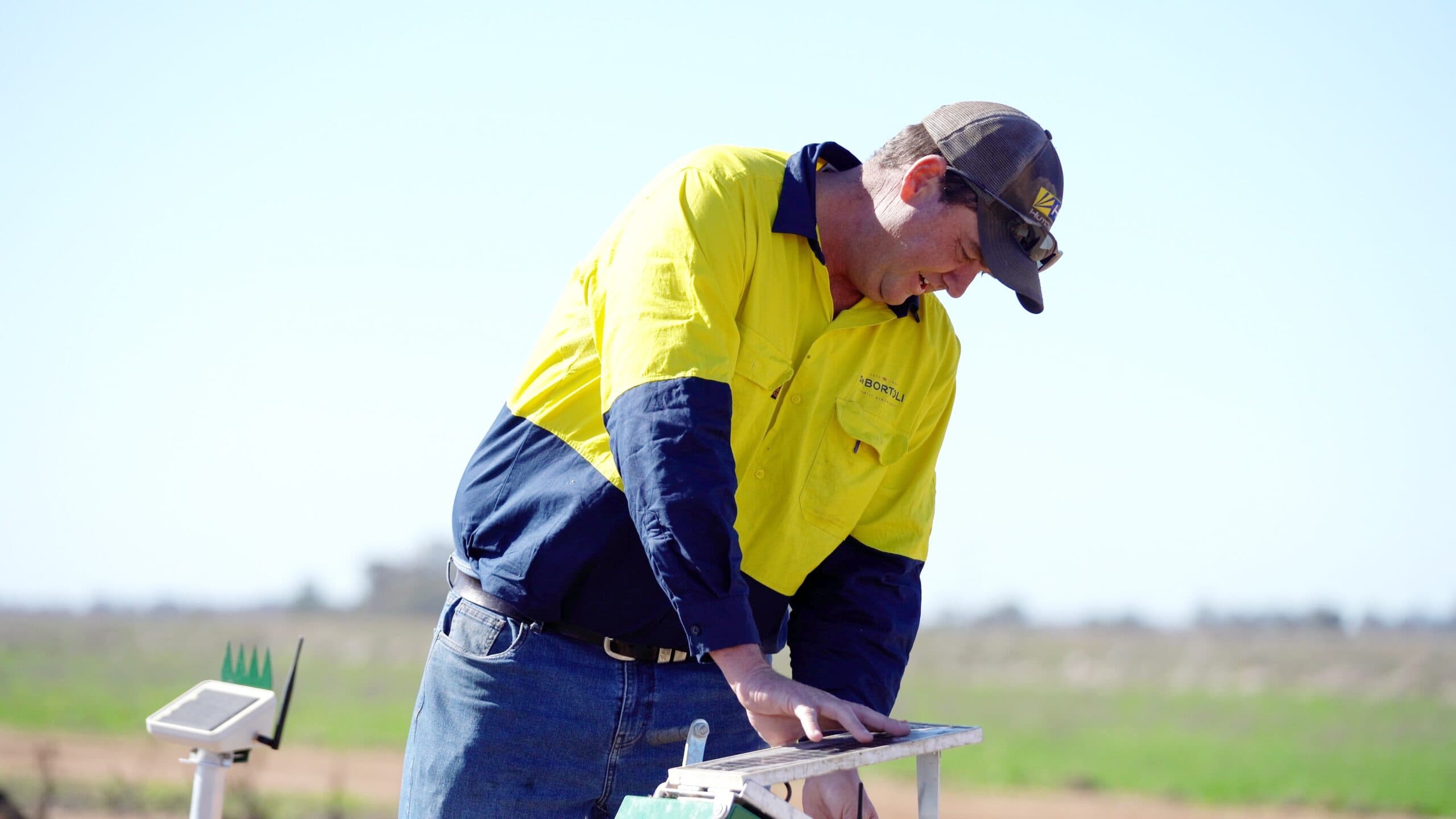Key points:
Smart sensor technology feeds information from the field to irrigation outlets to determine the timing and volume of water required for a crop.
Trials have revealed water and labor savings from the innovative technology.
One aerobic rice production trial at Bilbul in the Riverina, NSW, yielded 1.1 tonnes of rice for every megalitre of irrigation water.
As part of a Smarter Irrigation for Profit Phase 2 trial, led by Associate Professor John Hornbuckle from Deakin University, Darrell found using smart sensing automation technology not only made irrigating easier, but it also reduced water usage while trimming labour and production costs.
There was also a “better than expected” yield result.
So it’s no surprise that Darrell signed up to participate in the trial’s second year.
“With automation we were able to conduct our daily business, such as harvesting and spraying-out other crops without having to stop half-way through the day to change the water,” said Darrell.
“Smart sensors in the field takes the guesswork out of whether I should or shouldn’t water and it’s another tool that can help us manage water orders, staffing levels or even the timing around having to spray a paddock before we irrigate. We can do that a lot better thanks to the smart sensing.”
Darrell is the De Bortoli Farm Operations Manager at Bilbul in the NSW Riverina where the smart sensing automation irrigation technology was trialled on 35 hectares of aerobic rice this past season.
This trial is part of the ‘Smart Irrigation control for water and labour savings in rice growing systems’. The project is a sub-project of Smarter Irrigation for Profit Phase 2 and is supported by funding from the Australian Government Department of Agriculture, Water and Environment as part of its Rural R&D for Profit Program and AgriFutures Australia, Deakin University and Padman Automation.
Participation in the trial was De Bortoli’s first step into irrigation automation. While the logistics worked well, consequential changes to the daily work schedule took some adjusting to.
“We’ve got auto winches running off the channel to supply water to the rice fields, and autosensing out in the fields to know the water heights and to trigger the next bays to open or close throughout the fields,” said Darrell.
“I actually feel redundant as an irrigator now. I take an afternoon drive-by to see if it is working every day and every day it seems to be working. I have to find an excuse to check the paddock now, as opposed to having to check every five to six hours with traditional irrigation systems.”
Darrell’s trial was conducted on an aerobic rice production system (also deceivingly referred to as “dry rice”) which yielded 1.1 tonnes of rice for every megalitre of water used. He estimated water usage was down 30 per cent compared to other fields irrigated in a traditional way during the c21 season. “They are very preliminary results, being the first year of the trial, but we have got very strong incentives to keep working with John and to participate in future trials,” said Darrell.
“We have reduced the growing cost per tonne, using less water, and this gives us the ability to grow more rice with the allocation we are given. That in turn improves our business.”
It’s been up to 10 years since De Bortoli grew rice in a traditional flooded production system.
The business’s focus on sustainable irrigation practices underpinned the move to an aerobic rice production system, with the progression to improved water use efficiencies ongoing.
“Over the past 12 years we’ve moved out of aerial sown rice and into drill sown rice,” said Darrell.
“Following that we went across to delayed permanent water and the next step was to see how we could grow rice in an aerobic situation. This project was a good way to test out theories, see what extremes we could push a rice crop to and develop a better system to go forward with.”
Darrell’s trial was one of three. A second experiment at the Rice Research Australia Pty Ltd farm near Jerilderie in southern NSW also tested the smart sensing automated irrigation last season.
Associate Professor John Hornbuckle, from Deakin’s Centre for Regional and Rural Futures’ Griffith Irrigation Laboratory, led the development of the smart sensing automation technology, which includes field sensors and satellites with Wi-Fi clouds that support information transmission and automation control.
“Smart sensors in the field measure things like soil tension and water depth, and convey feedback that determines how the irrigation is controlled,” said John. “The smart irrigation outlets then move water on and off the field based on what the sensors are telling them.”












